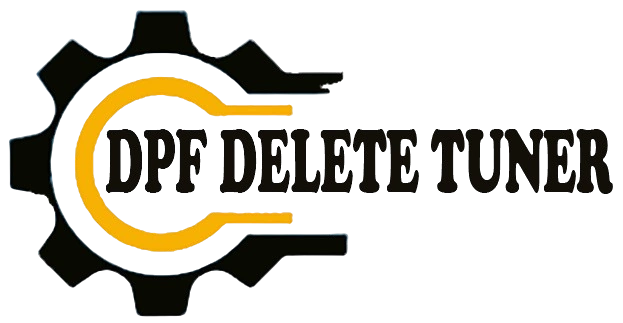Overview
| CODE | REASON | EFFECT |
| Fault Code: 6735 PID: SPN: 5569 FMI: 0/16 LAMP: None SRT: |
High internal temperature detected in the aftertreatment diesel particulate filter soot sensor module.
|
None on performance. |
Circuit Description
The aftertreatment particulate matter sensor is a smart device and communicates with the engine control module (ECM) via the J1939 data link. The aftertreatment particulate matter sensor performs internal diagnostics and reports malfunctions back to the primary ECM using the J1939 data link. The particulate matter sensor is permanently attached to the particulate matter control module. They are serviced as a single component and can not be replaced individually. The aftertreatment particulate matter sensor is used to measure the soot emissions at the outlet of the aftertreatment system.
Component Location
The aftertreatment particulate matter sensor location can vary depending on engine application. It is usually located in the exhaust system at the outlet of the selective catalytic reduction (SCR) catalyst.
Conditions for Running the Diagnostics
This diagnostic runs continuously when the engine is running.
Conditions for Setting the Fault Codes
The aftertreatment diesel particulate filter soot sensor module reported the internal circuit board temperature was too high.
Action Taken When the Fault Code is Active
- The ECM illuminates the amber CHECK ENGINE lamp and/or malfunction indicator lamp (MIL) after the diagnostic fails on two consecutive trips.
Conditions for Clearing the Fault Code
- Perform a key cycle.
- Start and idle the engine.
- To validate the repair, use the recommended Cummins® electronic service tool or equivalent to perform the “Aftertreatment Current Based Particulate Matter Sensor Regeneration Test” found in ECM Diagnostic Test.
- The ECM will turn off the amber CHECK ENGINE lamp immediately after the diagnostic runs and passes.
- The fault code status displayed by the recommended Cummins® electronic service tool or equivalent will change to INACTIVE immediately after the diagnostic runs and passes.
- For On-Board Diagnostics (OBD) engines, the ECM will extinguish the Malfunction Indicator Lamp (MIL) after three consecutive trips where the diagnostic runs and passes.
- The “Reset All Faults” command in the recommended Cummins® electronic service tool or equivalent can be used to clear active and inactive faults, as well as extinguish the MIL for OBD applications.
Shop Talk
This fault code indicates the internal temperature of the aftertreatment diesel particulate filter soot sensor module was too high. Troubleshoot the exhaust system for leaks, missing heat shields, or dirt and debris that could lead to overheating of the aftertreatment diesel particulate filter soot sensor module.
Troubleshooting Summary
Solution: S00000713
Verification
Conditions
- Turn keyswitch OFF.
Action
- Verify the aftertreatment particulate matter sensor is properly mounted.
- Verify the proper heat shield is mounted over the particulate matter sensor.
- Visually check that no aftermarket shields, flaps, or brackets are mounted too close to the aftertreatment particulate matter sensor.
- Visually inspect for any exhaust leaks which would allow the aftertreatment particulate matter sensor to overheat.
- Visually inspect for any obstruction or blockage in or around the aftertreatment particulate matter sensor.
Specification
- If the aftertreatment particulate matter sensor is incorrectly mounted, heat shield missing (if equipped), obstruction or debris around the sensor, then proceed to the Repair section.
Linked Solutions
- None
Repair
- Relocate and/or secure the aftertreatment particulate matter sensor.
- Install the proper heat shield (if equipped).
- Remove any obstruction or blockage in or around the aftertreatment particulate matter sensor.
- Repair exhaust leaks that are causing the aftertreatment particulate matter sensor to overheat.
Validation
- Connect all components
- Connect the recommended Cummins® electronic service tool or equivalent.
- Disable the fault code.
- Operate the engine within the “Conditions for Clearing the Fault Code” found in the Overview section of the troubleshooting procedure.
- Verify that the fault code is no longer active.
- Check ECM Calibration Revision History
- Use the recommended Cummins® electronic service tool or equivalent to find the current ECM code and revision number in the ECM.
- Compare the ECM code and revision number in the ECM to the calibration revisions listed in the ECM Calibration Revision History Database for applicable changes related to this fault code.
- Refer to ECM Calibration Revision History Database.
Solution: S00000443
Verification
Conditions
- Connect all components.
- Turn keyswitch ON.
- Connect the recommended Cummins® electronic service tool or equivalent.
Action
- Use the recommended Cummins® electronic service tool or equivalent to read the fault codes.
- Use the recommended Cummins® electronic service tool or equivalent to find the current ECM code and revision number in the ECM.
- Compare the ECM code and revision number in the ECM to the calibration revision listed in the ECM calibration revision history for applicable changes.
Specification
- If a calibration update for this fault code is available, the ECM calibration revision must be that revision or higher.
Linked Solutions
- None
Repair
- Prior to downloading the ECM calibration, check to see that all job images and all other troubleshooting has been documented as downloading an ECM calibration will remove the fault codes on the ECM.
- Download the updated ECM calibration code.
Validation
- Connect all components
- Connect the recommended Cummins® electronic service tool or equivalent.
- Disable the fault code.
- Operate the engine within the “Conditions for Clearing the Fault Code” found in the Overview section of the troubleshooting procedure.
- Verify that the fault code is no longer active.
- Check ECM Calibration Revision History
- Use the recommended Cummins® electronic service tool or equivalent to find the current ECM code and revision number in the ECM.
- Compare the ECM code and revision number in the ECM to the calibration revisions listed in the ECM Calibration Revision History Database for applicable changes related to this fault code.
- Refer to ECM Calibration Revision History Database.
If all steps have been completed and no root cause has been identified, then follow the technical escalation process.
